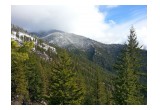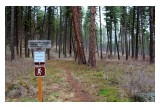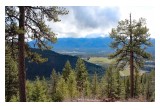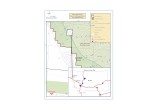
MISSOULA, Montana, September 21, 2016 (Newswire.com) - An important inholding on a southern spur of the Cabinet Mountains will remain undeveloped ‒ preserving the integrity of a U.S. Forest Service inventoried roadless area and a portion of the U.S. Fish & Wildlife Service’s Cabinet-Yaak Grizzly Bear Recovery Zone ‒ thanks to The Vital Ground Foundation’s recent acquisition of a 43-acre parcel on the west side of the Weber Gulch drainage near Thompson Falls, Montana.
Surrounded by Lolo National Forest’s Cube Iron-Mt. Silcox Roadless Area, development of the private inholding could have significantly disrupted wildlife habitat connectivity if access rights to the parcel had been exercised for residential purposes. In addition to the significant environmental and scenic impacts development would have created, the associated road construction would have proven enormously costly for the Forest Service, requiring many hours of federal oversight and necessitating road closures elsewhere in the grizzly bear recovery zone to keep with density requirements for the protected area.
"It's only 40 acres, but the negatives of a road or house up there would affect a lot more than 40 acres."
David Wrobleski, Wildlife Biologist, U.S. Forest Service
“I’m excited about it,” says David Wrobleski, a wildlife biologist for the Plains/Thompson Falls District of Lolo National Forest. “It’s only 40 acres, but the negatives of a road or house up there would affect a lot more than 40 acres.”
Situated amid sprawling ponderosa pine forest, Weber Gulch serves as the entry point for popular hiking and hunting destinations, with a Forest Service trailhead providing public access to the steeply-walled drainage and the vast roadless lands beyond.
The area also hosts some of the southernmost undeveloped habitat for the recovering Cabinet-Yaak grizzly bear population, which numbers around 50 animals according to a recent federal study. “Vital Ground is focusing attention on the Cabinet-Yaak recovery zone because it provides a huge swath of high-quality grizzly bear habitat in which the success ‒ or loss ‒ of a single bear has serious implications for recovery of the species throughout the region,” says Ryan Lutey, Vital Ground’s executive director.
“If grizzly bears are going to make recovery progress on a regional scale, we need to do everything possible to minimize conflicts between bears and people,” Lutey continues. “Beyond preventing the loss of existing habitat, it is also critical to invest in education and public outreach, especially in regard to eliminating wildlife attractants, as bears expand their range. Social tolerance for the species needs to be stewarded simultaneously with habitat protection.”
Beyond its value to bears, the mid-elevation parcel provides elk, deer and moose with an important transition zone between high-elevation summer ranges and the lower terrain to which they migrate to reach winter habitat. Following ungulates down to the valley floor are mountain lions, wolves, bobcats, and possibly wolverines and threatened Canada lynx. The acquisition also provides important fawning/calving grounds during spring, particularly for elk herds that require large chunks of uninterrupted habitat to maintain healthy populations.
Vital Ground’s acquisition is the result of more than a year of partnership-building in support of the project. Grants from the Montana Fish & Wildlife Conservation Trust, the Cinnabar Foundation, and the Chicago Zoological Society anchored the purchase, complementing donations from the organization’s individual members and donors.
An accredited land trust and 501(c)(3) organization, The Vital Ground Foundation works cooperatively with landowners, communities, and state and federal agencies to help conserve some of Earth’s most magnificent and unique places for people, grizzly bears, and their larger natural communities.
For more information, contact The Vital Ground Foundation, 20 Fort Missoula Rd., Missoula, MT 59804; also available at (406) 549-8650 and info@vitalground.org.
Source: The Vital Ground Foundation
Share:




